The most amazing "medical" animals # 2: Black Lemur
Again against the same "disease": the mosquito. This insect is the deadliest animal in the world, because every year it kills 2.7 million people in the world, infecting their diseases. In the jungle of Madagascar the Lemur manufactures its repellent, but unlike the doctor in position 2, it uses another insect. Yes, that's amazing. The lemur uses a hundred pies, taking advantage of the fact that almost no animal approaches this insect because it releases hydrogen cyanide. The lemur not only approaches this insect, but uses this deadly gas released by the centipede, to anoint the whole body, and thus, mosquitoes. Wonderful not ...
Did you know?
That the word lemur means "ghost" in Latin? This is the perfect name for them because as arboreal, they usually go unnoticed high up in the dense foliage of the branches, although their calls and movements are clearly audible from the ground.
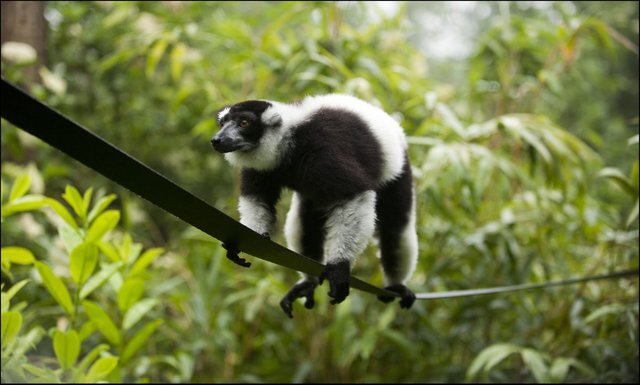
Source
We can find the Black and White Lemur in the south of the Above River, from the south of Ambatovaky to Betampona and Zahamena National Park in Madagascar. They live in the east of the rainforests and can be found at 1,200m above sea level. Some of them live in the jungle, while others seem to thrive in the desert. They spend all their time in the trees, but they can also be seen on the ground.
Apart from humans, the Black Lemur is the only primate in the world that can have blue eyes. Many of them have black or orange eyes. They have a very long tail that they use to maintain balance when climbing trees, they jump vertically and their hind legs are very strong. The males have a dark skin color and the females have a lighter shade of brown. While they are similar in size these color differences allow us to be able to identify different genres with ease.
The coat of the black and white lemur is long and soft. The ears are hidden by the fur. In this species, most of the fur is black, with white parts on the limbs, on the back and the collar that surrounds its head.
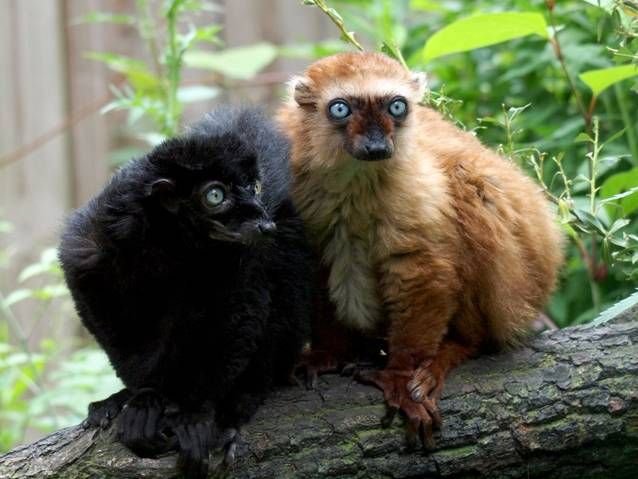
Source
The Black Lemur is known for being outside and venturing into the environment both during night hours and during the day. They live in families of about 15 members. Females are dominant, but males are well treated among these primates. Within these families, the bonds are very strong. The fight is very rare but may increase during the mating season. Males usually move between families also in order to mate as much as possible.
FEEDING
The diet consists primarily of fruits and nectar, supplemented with leaves and seeds.Access to nectar is only possible for short periods each year, but it is the dominant food when plants bloom. The lemurs take the nectar using their tongue delicately, so they do not destroy the flower and collect the pollen in their snouts and fur.
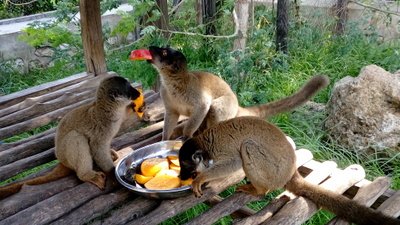
Source
BEHAVIOR and REPRODUCTION
This species of lemur is arboreal, that is to say, that it spends its time walking and jumping by the great branches of the trees. They usually stay in an area with large fruit trees for several weeks before moving on to another area. All the groups have a territory and the groups become aggressive in the limits of these places.
It is exclusively diurnal, being more active in the morning and in the afternoon, where its typical sounds are commonly heard. The females dominate in front of the males, this allows them access to the food in the first place and the choice of the male. The dominant rank of females in primates is characteristic and unique in prosimians.
The groups change according to the season. The females form large groups with the wet season and disperse with the dry season in search of food. They reach sexual maturity at 2 years. The females possess 6 mammary glands and can breed several offspring simultaneously.
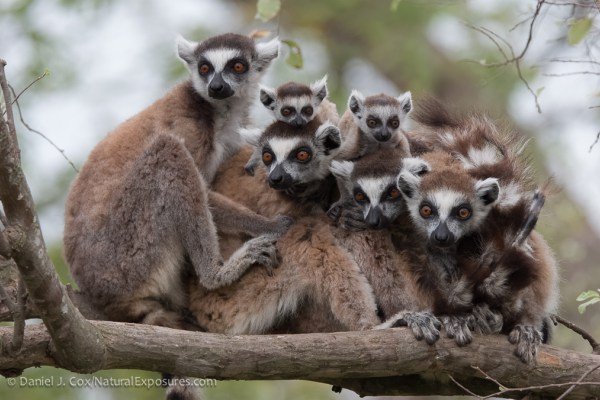
Source
The gestation period is between 90 to 102 days, considerably shorter than other species of other genera. More than half of the births are twins, and the rest are simple or triplets.
The young weigh between 80 and 100gr. After the first and second week, the female begins to move her offspring. By four weeks they are as active as adults. At 5 weeks the child can climb through the treetops. Breastfeeding ends at 135 days after the baby is born.
Conservation
We do not know the exact number of black lemurs that are currently in the wild. This is difficult to tell because of the ways in which they are dispersed throughout the environment. However, studies show that its natural habitat is still reduced in the hands of humans. There are ongoing efforts to help protect them, but this will not help if the government of the island of Madagascar does not have severe penalties for those who deliberately hunt and capture these primates.
The black and white lemur has a system of alarm calls, which allow alerting the members of the group of the presence of possible predators. Up to now more than 12 different sounds have been recognized and vary according to where the danger is located: in the trees, in the air, on the floor, etc. There are also calls between offspring and mothers.
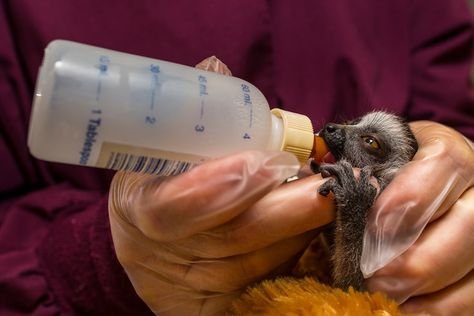
Source
Its natural predators are the boa constrictor, eagles, hawks and the pit (a carnivorous mammal that is only found in Madagascar).
References
- http://www.wildmadagascar.org/wildlife/lemurs.html
- https://www.ncbi.nlm.nih.gov/pubmed/26198179
- https://www.sciencedaily.com/releases/2007/10/071030191832.htm
- http://www.comozooconservatory.org/about/conservation/animal/#/animal
- https://www.journeysinternational.com/destinations/africa/madagascar/madagascar-lemur-adventure